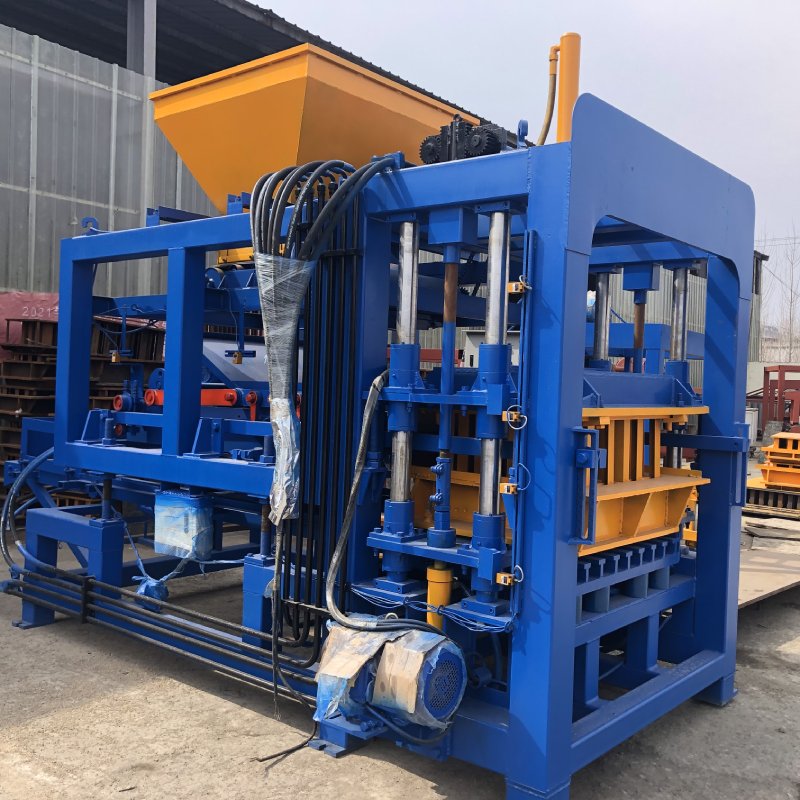
The construction industry stands at the threshold of a technological revolution that promises to reshape the way we build.
One of the most remarkable innovations driving this change is the cutting-edge block making machine.
This essay delves into the transformative impact of these machines on the construction landscape, exploring how they streamline the journey from raw material to a solid, functional structure.
Through improved efficiency, sustainability, and versatility, the cutting-edge block making machine is redefining construction practices for the better.
The Journey of Construction: Traditional Challenges
The journey from raw materials to a finished structure has historically been marked by various challenges.
Traditional construction methods often involve time-consuming processes, skilled labor requirements, and inefficiencies that contribute to project delays and cost overruns.
The need to strike a balance between cost-effectiveness and structural integrity has driven the search for innovative solutions.
The advent of cutting-edge block making machines presents a pivotal opportunity to address these challenges and revolutionize the construction process.
The Essence of Cutting-Edge Block Making Machines
At the heart of this transformation are cutting-edge block making machines that combine engineering precision, automation, and adaptability. Unlike conventional construction methods that rely heavily on manual labor, these machines automate the production of various building components, such as concrete blocks and bricks, with an unprecedented level of accuracy and efficiency.
Equipped with advanced features like modular molds, computerized controls, and real-time monitoring, these machines usher in a new era of construction technology.
Efficiency through Automation
One of the most significant advantages offered by cutting-edge block making machines is their capacity to enhance efficiency through automation.
Traditional bricklaying and block-making processes are not only labor-intensive but also prone to inconsistencies.
The human factor introduces variations in the size, shape, and quality of building components, leading to structural vulnerabilities.
In contrast, these machines eliminate human errors, producing uniform blocks that meet precise specifications.
Automation also accelerates the construction timeline.
What once required extensive man-hours can now be accomplished in a fraction of the time, allowing for quicker project completion and occupancy.
This accelerated pace not only benefits the construction industry but also facilitates the timely delivery of critical infrastructure projects.
Sustainability at the Core
In an era of heightened environmental consciousness, the construction industry is under increasing pressure to adopt sustainable practices. Cutting-edge block making machines play a pivotal role in this transition.
Many of these machines are designed to use eco-friendly materials such as recycled aggregates and supplementary cementitious materials. Additionally, the automation process itself reduces material wastage and energy consumption.
Furthermore, the versatility of these machines supports modular construction—a practice that aligns with sustainability objectives.
Modular construction reduces construction waste, promotes recycling, and enables structures to be disassembled and repurposed, thus extending their lifecycle.
By integrating sustainability into the construction process, cutting-edge block making machines contribute to a more environmentally responsible industry.
Versatility and Design Freedom
Beyond efficiency and sustainability, cutting-edge block making machines offer a new level of versatility and design freedom.
These machines can produce an array of building components with varying shapes, sizes, and finishes.
This flexibility empowers architects, designers, and builders to explore innovative architectural designs that were previously challenging to achieve with traditional methods.
Moreover, the precision of these machines ensures that intricate design details are accurately reproduced in every block, contributing to the aesthetic appeal of the final structure.
As a result, buildings constructed using these blocks stand out not only for their efficiency but also for their aesthetic uniqueness.
The journey from raw material to solid structure has undergone a paradigm shift with the emergence of cutting-edge block making machines. By automating production, enhancing efficiency, promoting sustainability, and offering design versatility, these machines are redefining construction practices.
The construction industry, once characterized by its challenges and limitations, is now propelled into an era of innovation and progress.
As these machines become more integrated into construction processes, their impact will extend beyond individual projects.
They have the potential to reshape urban landscapes, accelerate infrastructure development, and pave the way for a more sustainable and adaptable built environment.
As architects, engineers, and builders continue to explore the possibilities afforded by cutting-edge block making machines, they are shaping a future where the journey from raw materials to solid structures is marked by efficiency, sustainability, and boundless creativity.
